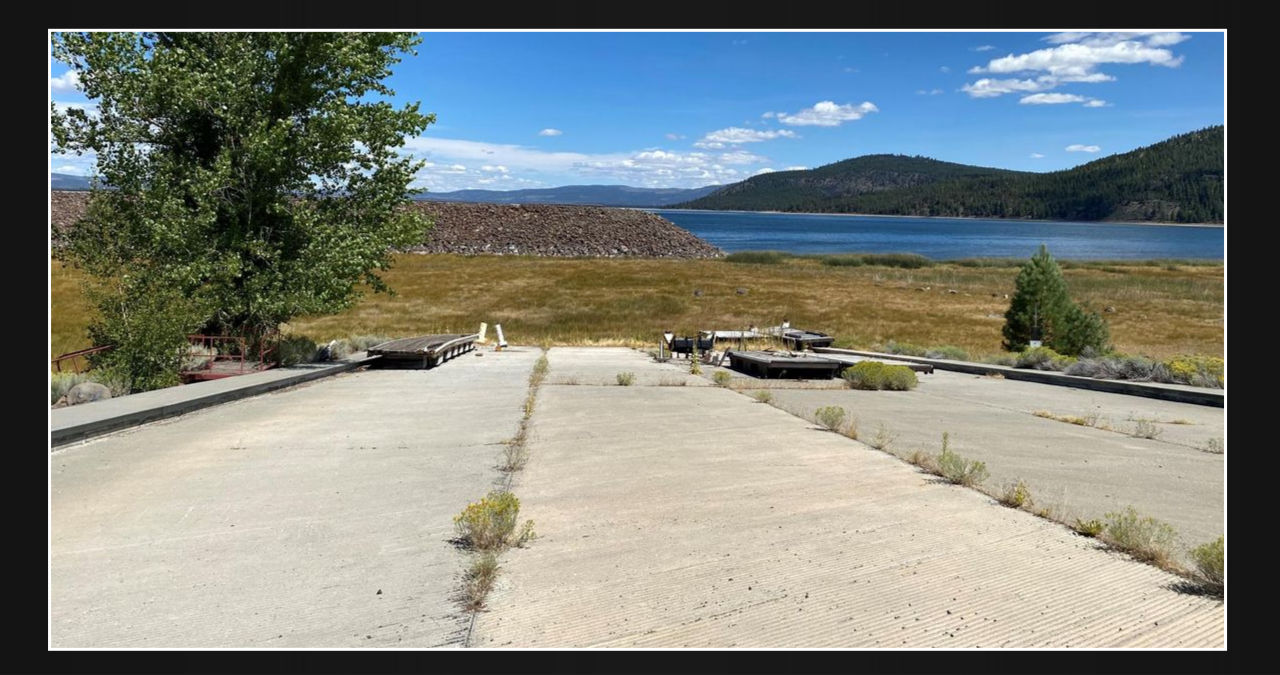Eagle Lake, which is the second largest lake in the state, is experiencing a significant decline that it is unlikely to bounce back from.
Eagle Lake near Susanville. in Lassen County, California, is currently experiencing a decline in water levels. This unfortunate situation is the result of a combination of factors, including a warmer climate and mismanagement of water resources.
The Bureau of Land Management acknowledges that although efforts can still be made to protect the remaining portions of the lake, restoring the lake levels to their state from a century ago would require decades of continuous rainfall without evaporation. Unfortunately, this scenario is highly unlikely to occur.
Every year, the water levels at Eagle Lake decrease by several feet due to evaporation and winds.
According to Stan Bales from the Bureau of Land Management, the lake experiences an annual loss of 3-5 feet. To prevent the lake from shrinking further, it is crucial to maintain a balance between the rate of loss and recharge.
Recharging the lake with water poses a challenge. Eagle Lake is located on the leeward side of the lower Cascade Mountain Range, which means it falls in the rain shadow region where precipitation is somewhat limited compared to the windward side. It’s like receiving the remnants of a storm. Consequently, refilling the lake becomes more difficult due to the lower rainfall and snowfall amounts.
According to Bales, Fredonyer Peak, which stands at nearly 8,000 feet, has excellent snow retention despite its limited length.
Eagle Lake, a closed lake basin, solely relies on Pine Creek as its only surface source for runoff.
According to Bales, the original plan was to extract water from Eagle Lake, enhance the volume of Willow Creek, divert it into Honey Lake Valley, and subsequently sell the water to farmers and ranchers through a canal system in an attempt to generate profit.
They had no idea that the water contained high levels of alkaline, making it unsuitable for growing crops.
According to Bales, the operation of the tunnel resulted in a significant decrease in the water level of Eagle Lake, which displeased some individuals who had a deep attachment to the lake.
A concrete plug with a valve was eventually installed to address the water rights dispute raised by the landowners. As a result, only a minimal amount of water was released.
According to Bales, the issue gained significant attention in the past six to eight years due to the lake’s continuous decline during the drought. Many people believed that the plug was responsible for draining and lowering the water levels. Eventually, the BLM manager agreed to close the valve on that plug.
The once-thriving lake that attracted campers and fishermen has now been restricted to the southern side. According to the Bureau of Land Management, the water quality has been severely affected in the middle to northern sections of the lake. Algae has now started to flourish in the shallow waters of the north side and is gradually spreading throughout the entire lake.
According to Paul Divine from the California Department of Fish and Wildlife, the algae is having a significant impact on various water activities.
Divine noted that anglers have been particularly affected by the algae, as they often find it attached to their lines. As a result, they have to pause their fishing activities to remove the algae before they can continue catching fish.
The northside shoreline has experienced significant erosion, greatly affecting the overall appearance of Eagle Lake. However, the stunning beauty and distinctiveness of the lake have garnered attention. Efforts are currently being made to implement conservation strategies aimed at preserving the population of Eagle Lake Trout.
Divine explained that there were 11 different species of fish introduced into Eagle Lake between the 1900s and 1960s. However, none of these species have managed to survive till today. As a result, the lake now only consists of its native fish.
According to Divine, the feeding behavior of fish can be influenced by various factors such as their habits, diet preferences, weather conditions, and even the phases of the moon. By observing and understanding these aspects, anglers can gain valuable insights into the fish’s feeding patterns.
The preservation of Eagle Lake is being supported through the establishment of a fish hatchery. This initiative serves as a crucial step towards maintaining a thriving population of fish in the lake. However, there is a growing interest in exploring additional measures to safeguard the remaining resources of Eagle Lake.
Aubrey expressed that the project has been her passion and dedication since she was born.
For over two decades, Aubrey has worked diligently as a fishing tour guide, gaining extensive experience in the field. Alongside this, Aubrey is an active member of the nonprofit organization, Eagle Lake Guardians. Combining their passion for the lake and their expertise, Aubrey shares insights and concerns about the challenges faced by the once thriving Eagle Lake through their engaging blog posts.
Aubrey mentioned that due to the drought and changes in the water, the temperature has risen significantly. In fact, the last time she measured, the water was a warm 70.8 degrees at a depth of 30 feet.
According to Divine, Eagle Lake trout have the remarkable ability to thrive even in water temperatures as high as 70 degrees. These resilient fish have a knack for seeking out pockets of cooler water to inhabit.
She believes that engaging in recreational activities like ATV and bike riding can help sustain the economy, especially if fishing and camping fail to attract visitors.
The lake will continue to decrease in water level until significant snowstorms or runoffs replenish it.

